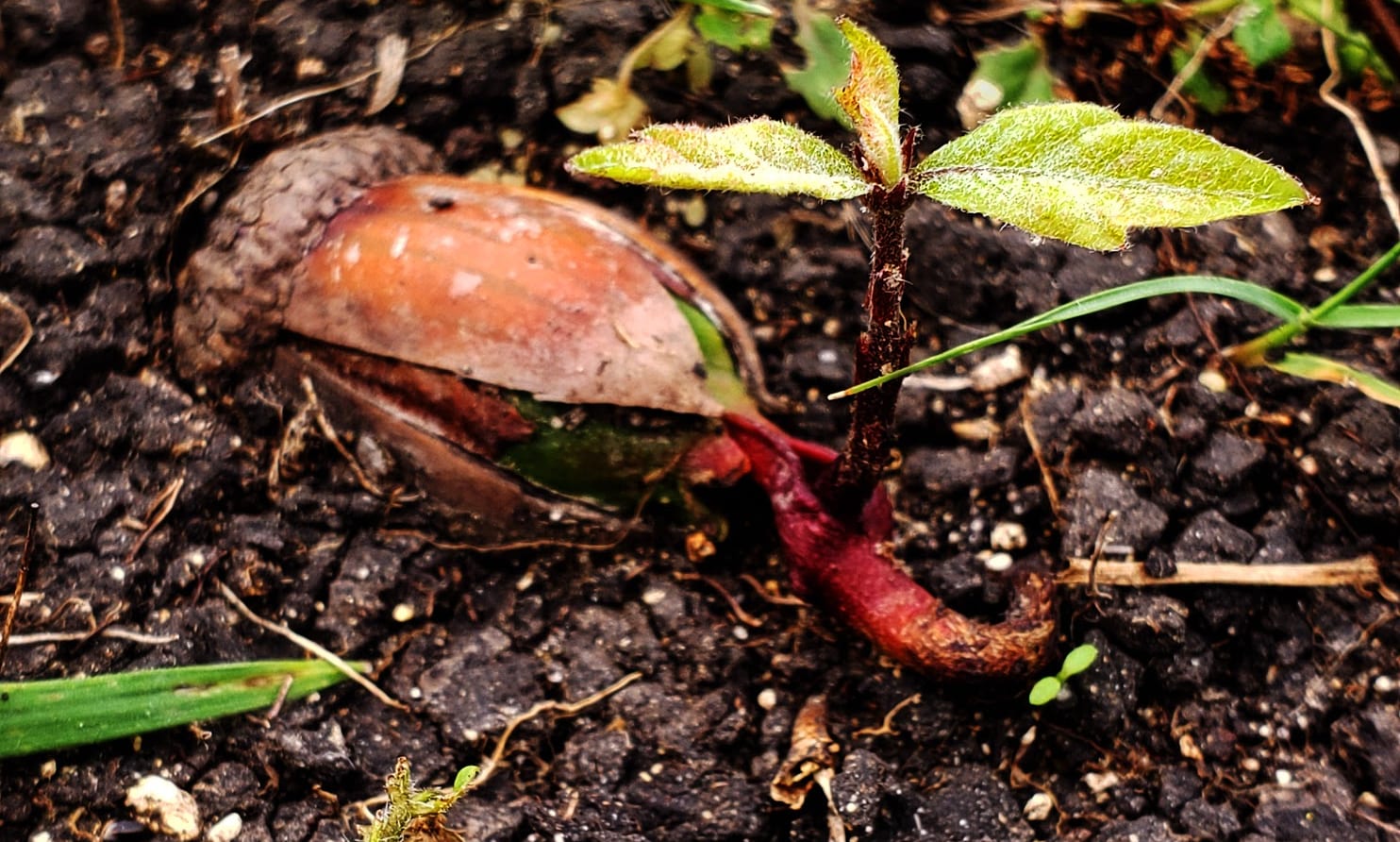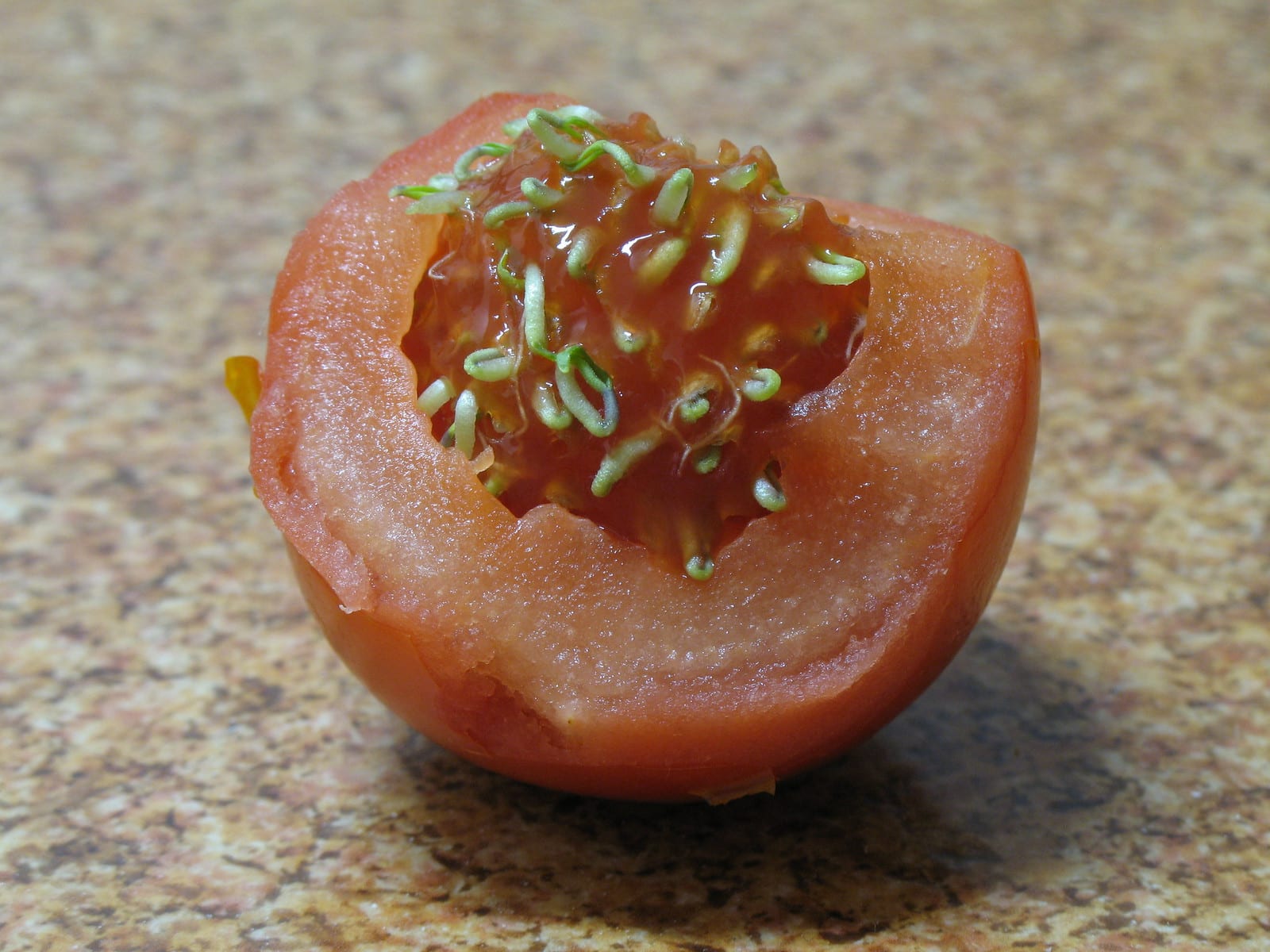This year I've been reading a lot about seed dormancy and while we're all hunkered down, sheltered in place during the COVID-19 pandemic, I can't help but feel there's an apt comparison to be made. Most plants don't get a lot of input on where they land as seeds, but they do have a say in when they sprout. Seeds in the soil will wait all winter, or sometimes for multiple years, before deciding that conditions are just right to launch into the world as seedlings. If you've been on walks around your neighborhood (a great way to stay sane right now), you've probably seen this process in action as different plants rapidly sprout and grow, like the oak pictured below. One of my favorites — bluebonnets — are just starting to bloom as spring comes into full swing.

Plants “spring up†now because one trigger to begin germination is warming temperatures after a cold period . This is also why, if you've ever tried to sprout seeds at home, you'll see recommendations to put seeds in your refrigerator for a week or so before planting. Spring and summer bring rain, the elimination of frost risk, and plenty of light for plants to produce the energy they need for growth. Seedlings do their best to time emergence during these favorable conditions so that they can grow as much as possible before harsher cold climates return.
In addition to environmental factors, there are internal triggers for germination, too. If you've ever cut into a tomato or an apple and found the seeds have already started sprouting, you've stumbled upon plant vivipary. This phenomenon is caused by fluctuating hormone levels in the seeds – namely, running out of the ‘dormancy hormone' known as abscisic acid. Using both external and internal cues to break dormancy lessens the chance that a plant will sprout too early, such as during a warm spell in February when there's still a risk of damaging frost later in the season.

Source: Tomato seeds premature sprouting licensed by mykhal under CC BY 2.0
Amazingly, some seeds can wait centuries for the proper signals to break dormancy. If you're a plant nerd like me, you may remember the Judean date palm, nicknamed “Methuselah,†that scientists sprouted from a 2,000 year old seed in 2005; he's still doing well, and scientists are attempting to breed him with modern and other ancient date varieties. Other successful germination attempts include the 1,300 year old lotus seed from China that scientists sprouted in 1994. Unfortunately, the resulting plant was sacrificed to carbon dating, but the lead scientist on the project, Jane Shen-Miller, has since been caring for other centuries-old lotus plants. Re-growing ancient plants can give us information about the aging process, as well as about the evolution of a plant and its associated diseases. It's the plant equivalent of Jurassic Park, with no frog splicing required!

While seeds are lying dormant, whether it be for centuries or a few months, they are part of the ‘soil seed bank.' Humans also create seed banks to preserve genetic diversity of crops (which ASO has written about here), and these natural seed banks serve similar purposes. In the case of a natural disaster, having a seed bank means that a given plant species won't become locally extinct. Less drastically, an individual plant can be assured more of its offspring will survive if some of its seeds wait to germinate in the following growing season. This has been studied in desert annual plants, where the harsh environment almost guarantees that not all seedlings will survive to adulthood. If some seeds have remained dormant in the soil (though what fraction does so varies year to year) then the parent plant still has offspring that might survive in the next year. This phenomenon is especially important in plants that can only make seeds once before they die, though seed dormancy exists in plants of all life histories.
Of course, humans can't bury themselves and wait decades to emerge from a shelter-in-place order. But in the meantime, maybe it'll help to imagine yourself like a little seed: waiting out a hard winter and prepping for the day that you can stretch back into the sunlight of normalcy.
About the Author

About the Author
- athenssciencecafehttps://athensscienceobserver.com/author/athenssciencecafe/April 17, 2020
- athenssciencecafehttps://athensscienceobserver.com/author/athenssciencecafe/April 3, 2020
- athenssciencecafehttps://athensscienceobserver.com/author/athenssciencecafe/March 30, 2020
- athenssciencecafehttps://athensscienceobserver.com/author/athenssciencecafe/March 6, 2020







